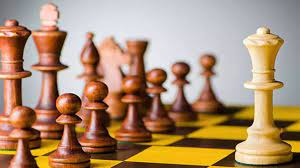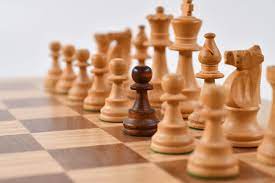Chess
Chess is a strategic board game that is played by millions of people worldwide. It is a two-player game where each player controls an army of different pieces with the ultimate goal of capturing the opponent’s king. Here’s a brief overview of chess:
Chessboard and Pieces: Chess is played on a square board with 64 alternating light and dark squares. Each player begins with 16 pieces, including one king, one queen, two rooks, two knights, two bishops, and eight pawns.
Objective: The objective of the game is to checkmate the opponent’s king. Checkmate occurs when the opponent’s king is under attack and cannot escape capture on the next move.
Movement of Pieces: Each type of chess piece moves in a specific way. The king moves one square in any direction, while the queen has the most freedom and can move in any direction along a rank, file, or diagonal. Rooks move horizontally or vertically, bishops move diagonally, knights move in an L-shaped pattern, and pawns move forward but capture diagonally.
Special Moves: There are a few special moves in chess. Castling is a move that involves the king and one rook to improve the king’s safety. Endgame passant is a pawn capture that can occur under specific circumstances. Promotion allows a pawn to be replaced by a more powerful piece when it reaches the opponent’s back rank.
Opening, Middlegame, and Endgame: Chess can be divided into three stages: the opening, where players develop their pieces and control the center; the middlegame, where tactical combinations and strategic plans emerge; and the endgame, where fewer pieces remain, and players focus on converting their advantage into a win.
Time Control and Notation: Chess games can be played with different time controls, including traditional long games and faster-paced blitz or rapid games. To record the moves of the game, chess notation is used, which allows players to review and analyze their games later.
Tournaments and Chess Ratings: Chess is played in tournaments at various levels, from local club events to international competitions. Players are assigned ratings based on their performance, such as the Elo rating system, which provides a measure of a player’s strength relative to others.
Chess is not only a game of strategy and calculation but also a popular intellectual pursuit, a tool for educational purposes, and a sport that fosters critical thinking, concentration, and decision-making skills. It offers endless possibilities for learning and improvement, making it a timeless and captivating game.




